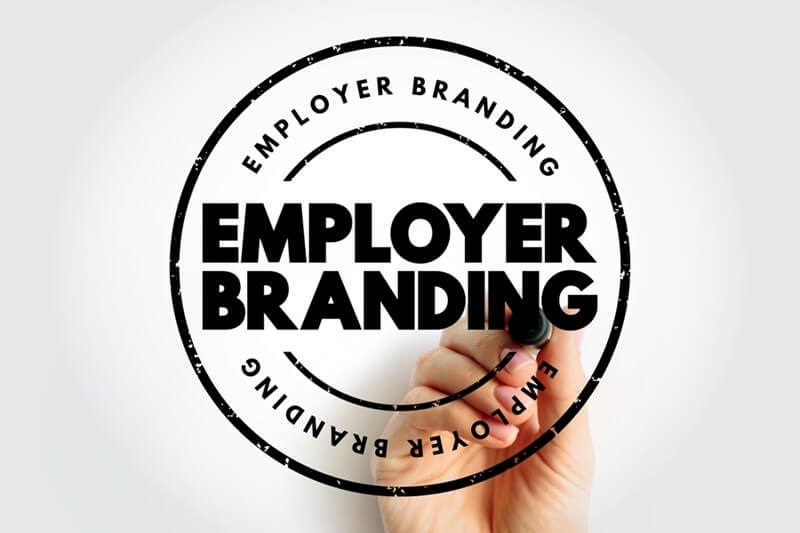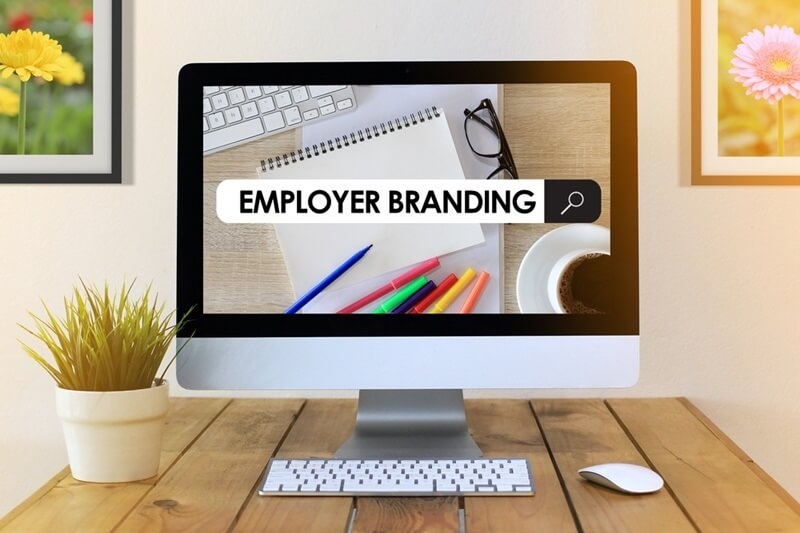
Employer branding in 2025 isn’t a vanity project. It’s a business weapon. In a market where top talent isn’t just hard to find—it’s hard to impress—you need more than a decent salary and a ping-pong table. You need a sharp, intentional employer branding strategy that doesn’t just look good but actually works.
Here’s how to build an employer brand that attracts the right people, pushes away the wrong ones, and turns your workplace into a magnet for serious talent.

The Employer Value Proposition (EVP) is the backbone of any employer branding strategy. Without it, you're just slapping random adjectives on your careers page and calling it culture.
Build your EVP like this:
The goal? Consistency. Your EVP should feel real in interviews and even more real six months into the job.
And remember, EVPs evolve. What worked in 2023 might feel stale in 2025. Keep listening, adapting, and refining it. Make it a living part of your culture—not just a slide in your HR deck.
Don’t Miss: Brand Strategy vs Marketing Strategy: Why You Need Both
Recruitment marketing isn’t branding’s sidekick—it’s the engine. This is where you turn employer brand awareness into actual applicants. And if you're still doing recruitment like it’s 2015, you’re already invisible.
Here’s how to sharpen your recruitment marketing strategy in 2025:
You’re not hiring resumes. You’re hiring humans. Market to them like you get that.
Also, track what content performs. Don’t blindly post because someone in HR said “we need more posts.” Use data to drive creative. Your recruitment marketing strategy should be a machine fueled by insight—not guesswork.
This is where too many companies mess up. They get caught in the trap of trying to sound “professional” and end up sounding robotic. Your employer brand should feel like your team sounds—not like a legal memo.
Authenticity isn't a strategy—it’s a filter. Your employer brand should:
If your brand sounds too polished, people will scroll past. Real is the new polished.
Inject some personality. Be bold in your language. Humor works. Vulnerability works. Candidates want to know what it feels like to work at your company—not just what your org chart looks like.
You can spend six figures on employer branding campaigns and still get outperformed by a single employee post that feels real. Why? Because people trust people more than logos.
Time to involve your team:
A solid employer brand building effort starts from within. If your employees wouldn’t recommend you, no branding campaign can save you.
Offer incentives, too. Reward storytelling. Celebrate vulnerability. Let them shape the brand—not just echo it.
Your audience isn’t sitting on job boards 24/7. They’re on Reddit, TikTok, Slack communities, and niche Discord servers. Show up there.
This isn’t about being trendy. It’s about relevance.
Employer branding 2025 is as much about distribution as it is about message. Put your story in the right places.
Also: Don’t underestimate SEO. Optimize your careers page like it’s your homepage. Because to a candidate—it is.
If your only metrics are likes and impressions, you’re doing it wrong. A powerful employer branding strategy is measurable—in hiring impact, not vanity metrics.
Track things like:
Numbers don’t lie. If your employer branding isn’t moving needles, revise it fast.
And compare year-over-year data. Are your best hires coming through branded channels or random job boards? Let the numbers show you where to double down.
Let’s talk employer branding examples that actually work:
Oatly: Snarky, bold, unapologetic. Their tone is so distinct you know it’s them instantly. Their employer brand matches their consumer voice perfectly.
Electronic Arts (EA): Brilliant use of video and storytelling. Their employee spotlights don’t feel scripted. They’re immersive.
Newell Brands: Their recruitment marketing strategy focuses on storytelling that feels homegrown and warm. It’s not flashy, but it resonates.
These companies didn’t copy trends. They built employer brands that fit them. That’s the whole point.
Explore More: Personal Branding Examples to Inspire Your Unique Identity
Employer branding in 2025 isn’t a one-and-done project. It’s a living, breathing part of your business. It touches recruiting, retention, culture, and leadership.
If you want to attract top talent, you need to stand for something. You need to say things out loud that other companies are too scared to. You need to build trust before someone even applies.
So stop playing it safe. Build a brand that’s loud, real, and impossible to ignore.
That’s how you build an employer branding strategy that wins in 2025.
This content was created by AI